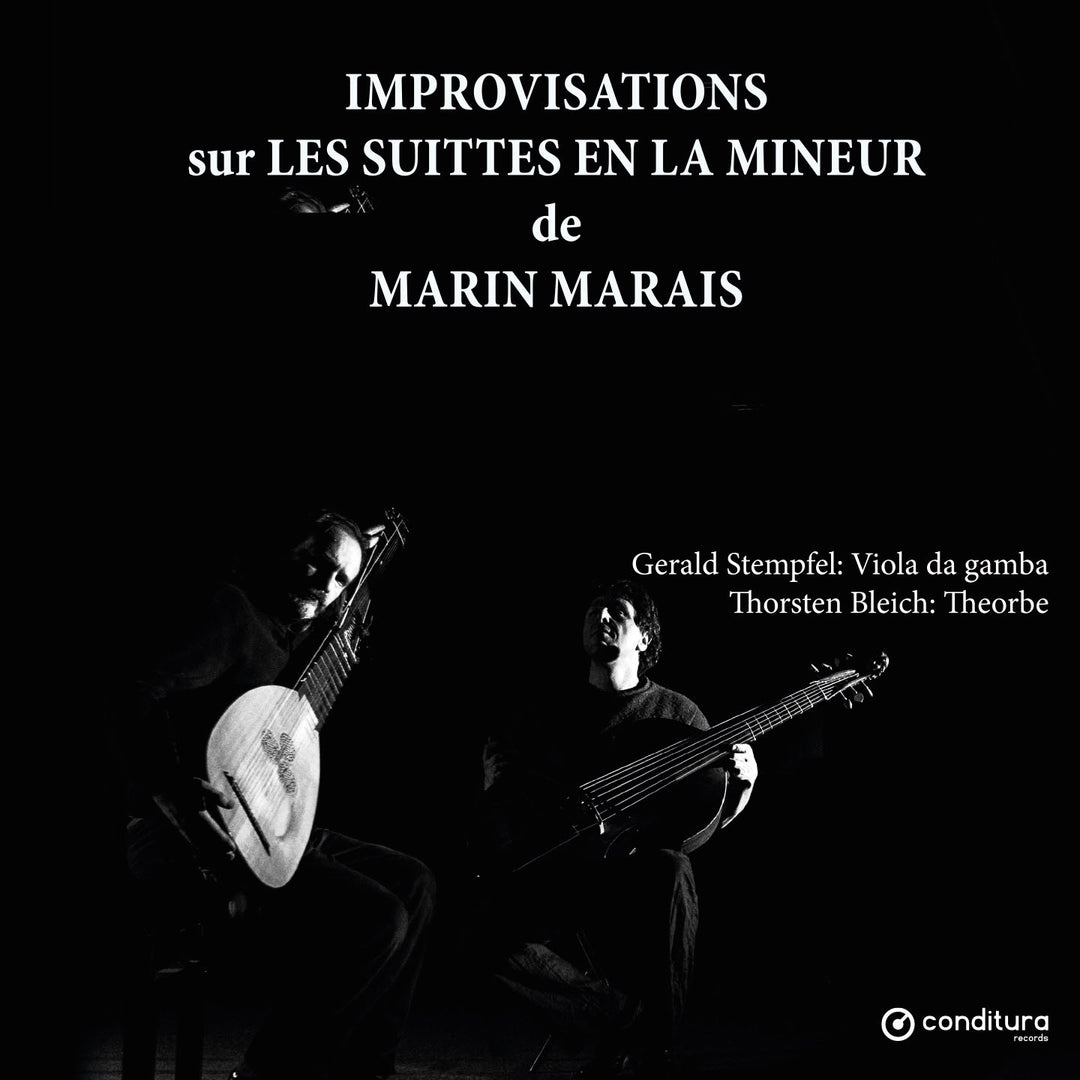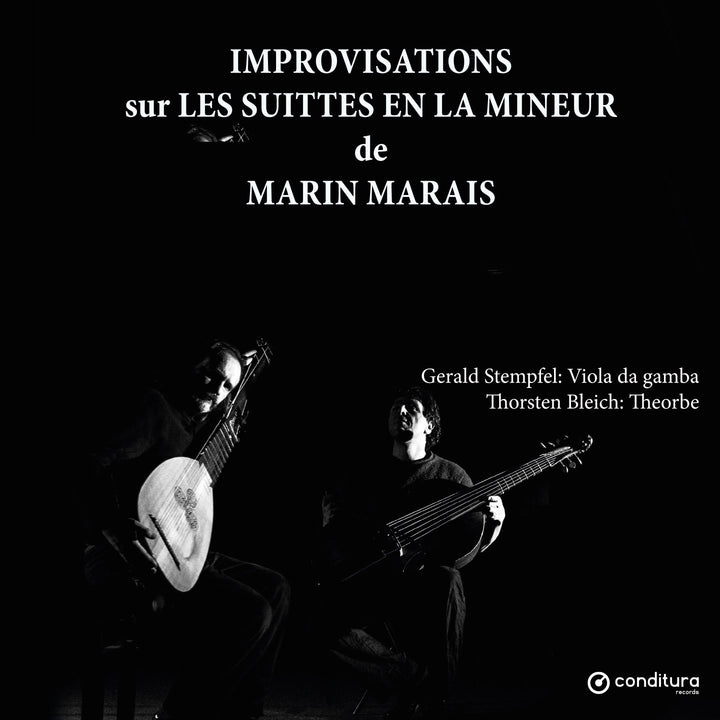Gerald Stempfel, Thorsten Bleich - Improvisations sur les suittes en la mineur (CD)
Old sources and manuscripts, well-preserved original instruments give us direct access to early music today. Unfortunately, none of these "time machines" are suitable enough to give us a picture of the high art of improvisation. The enthusiastic reports about the musical flights of fancy of a JS Bach on the organ or a Mozart on the piano make us at most regret that we were too young to have been there. However, with the present interpretation one feels vividly transported back in time and the music-making room of Marin Marais (1656-1728), who was born the simple son of a shoemaker and became the greatest viol player of his epoch.
Marais' famed improvisational skills may have grown out of his surreptitious eavesdropping on the mysterious Sieur de Sainte Colombe. The anecdote that Marais, fired by his teacher because he felt outshone by him, overheard him under a mulberry tree in his tree house has survived for centuries.
It is not said that Sainte Colombe collected the cocoons of the silk moth in his tree in order to weave cloth from them. In any case, the young Marais found enough "material" there to rank among the royal silks, where he soon became a viol player at the court of Versailles and played regularly at the "Soupers du Roy". Even the trained ear of King Louis XIV must have heard him again and again with different variations on the motifs of the "Sautillante" or the "Muzette", which were finally recorded in 1717 in the 4th book. In 1725, at the age of almost seventy, Marais proves that his inspiration is still alive with the Petit Caprice or La Mariee - although it takes a great deal of imagination to render these pieces as they are likely to be found in the suites of the king must have sounded, or as Marais received from his teacher in his youth, even before he was chased out from under his hut. Perhaps some of the almost entirely A minor improvisations on this CD are not entirely historical: here the performers address the timeless audience with their artistic freedom. While a second viol was usually provided, the accompaniment of the theorbo on a few strings underscores the expressiveness of the solo viol through its discretion and delicacy – like a breath of wind in the branches of the mulberry tree.
1 gavotte
2 preludes
3 Allemande
4 gavottes
5 Petit Caprice
6 La Sautillante
7 jigs
8 minuet
9 Rondeau Loure
10 La Sautillante
11 La Mariee
12 Allemande









